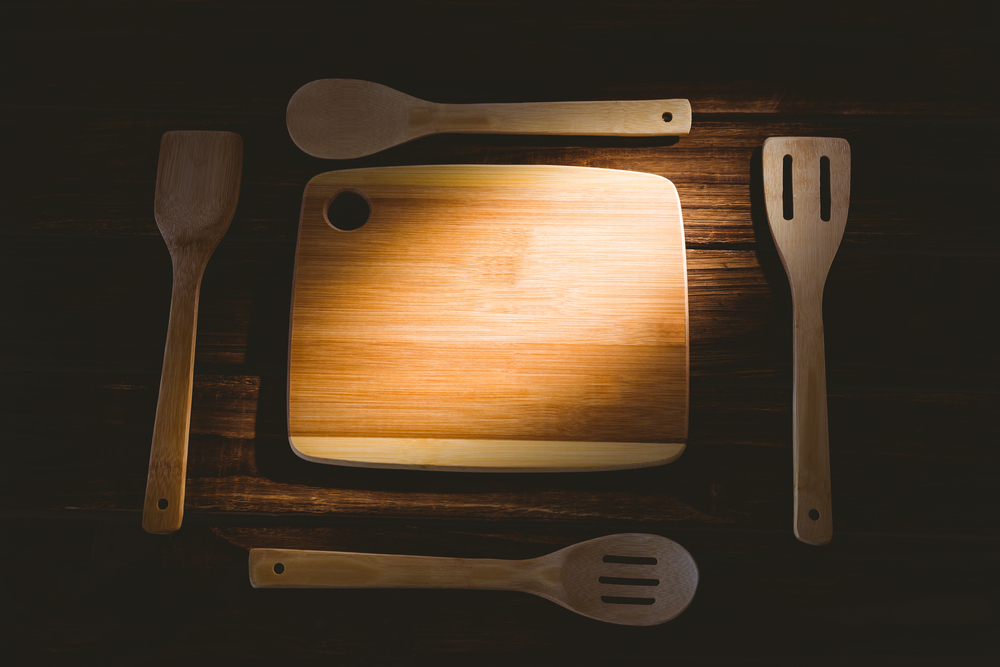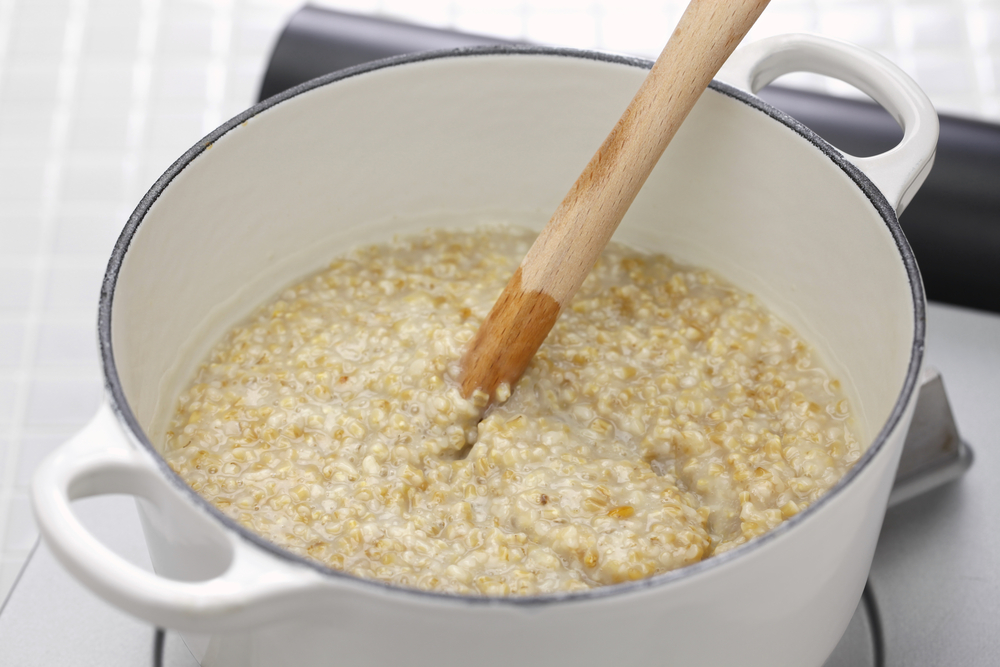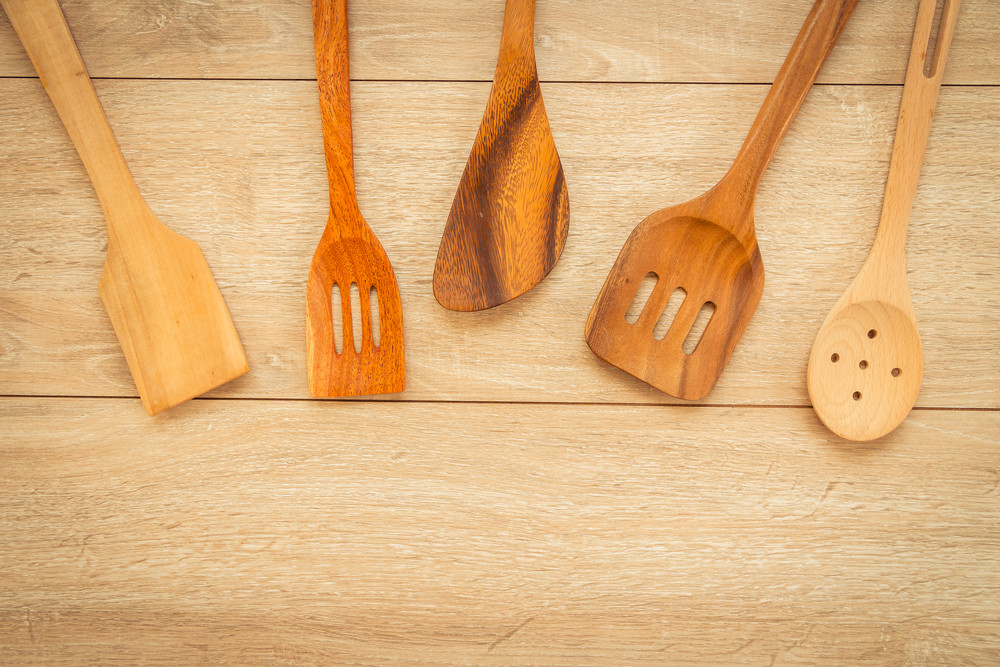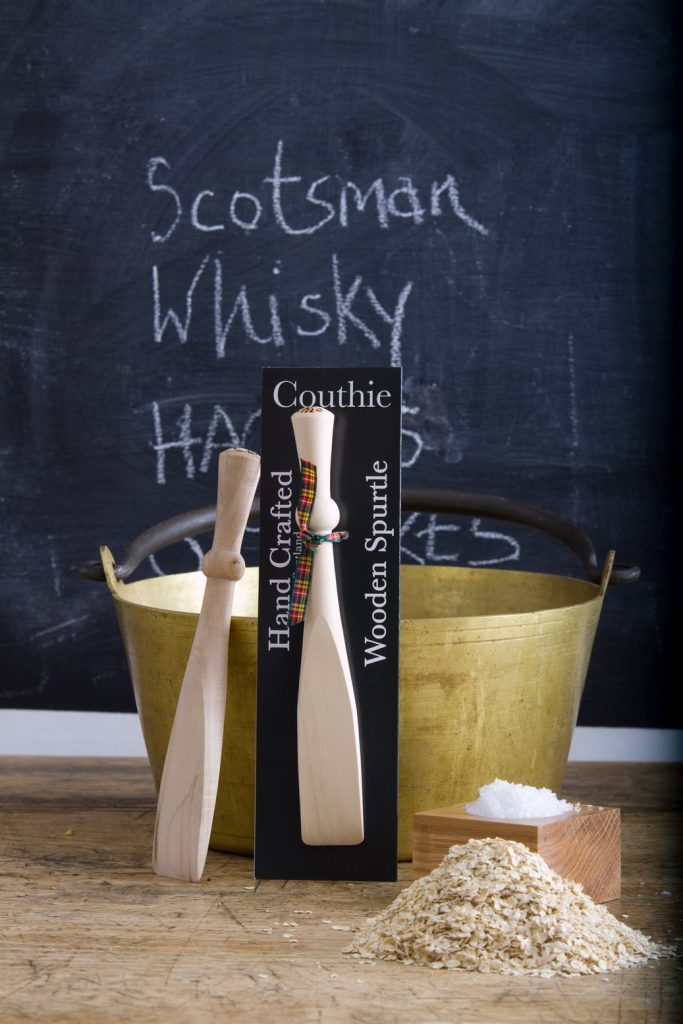Origins of Spurtle
The Spurtle is a wooden kitchen utensil that originated in Scotland.
As kitchen utensils go, it is one of the simplest ones for everyday life customers to purchase and use, yet performs to serve a very specific purpose extremely well.
While other wooden cooking pans and kitchen utensils can and often are used in place of the spurtle, they cannot perform quite as well as the wooden cookware spurtle itself can for its intended purpose.

Purpose of Spurtle
So, just what is that purpose? The spurtle was developed specifically for cooking oatmeal or porridge without becoming lumpy. If a wooden spoon is used to make porridge, stir porridge, or cook oatmeal it tends to become lumpy. The cylindrical shape of the spurtle prevents this and prevents the porridge from sticking to the utensil.
When stirring with a spoon, the stirring action is more about scraping the porridge off the sides of the pan or pot. But with a spurtle, it is more about mixing the porridge, almost like a whisk.
Some cooks will even beat it like a whisk while making porridge, ensuring it doesn’t have a chance to become lumpy. While originally intended for making porridge, they are also useful for stirring broths, stews, and soups.
Spurtles Vary in Sizes
Spurtles can vary in size, but most are about a foot long and between ¾” and 1” in diameter. They are always made of tight-grained, straight-grain hardwoods. The favored woods for making wooden spurtles are maple, beech, and cherry, with beech being the local favorite in the UK and cherry being the local favorite in the US.
What is Spurtle Used For
This raises the question of whether wood utensils are safe for food. The pores in wood can trap and remove food and hold both food and bacteria. While that is true, the woods used for cooking tools making wood spurtles are woods with tight pores, which will not trap food as easily as oak would.
Properly finished food is unlikely to get trapped in the wood. Any bacteria trapped in the wood will die when the wood spurtle is not used due to a lack of suitable moisture and food. The meat or bacteria first manages to survive the heat of cooking long enough to get into the wood, which is unlikely.

The American Spurtle
There is also an American variant of the spurtle stir between. It is somewhere between the kitchen utensils made of a spoon and spatula, a spatula, and the original spurtle. This design has a long, flat stirring area, roughly 2” wide and 6” to 9” long.
While a useful utensil is ideal for stirring various things, the wider surface area approaches that of a spoon or spatula. It doesn’t make it as good for stirring porridge stir oatmeal as a more traditional spurtle is.
Some American spurtles are now being made, which are slightly concave, making them more like long wooden spoons than they originally were. Unlike the original design, this concave surface has a high potential for porridge, oatmeal, or cake batter sticking to it.
While some cooks swear by the taste of this design, it is different enough from the original to warrant being called by its name.
It should be noted that the American version of the spurtle cannot be turned on a lathe like the original can. Spurtle would need to be cut out on a scroll saw and then have the edges shaped by a router and sanding.
While it is not difficult to make, it is not the same as making a traditional hand-carved wooden spurtle can.
Turning a Traditional Spurtle
It is all about a wooden spurtle of delicious food turned on the lathe, and is a very real, although simplified, application of spindle turning. It is a great beginner’s project tool for the beginning wood-turner. The only thing to note that may be of concern is that the surface needs to be extremely smooth. To avoid any risk of splinters, either in the wood of the food or in the hand that wields the is all about wooden spurtle here.
To turn a spurtle on the lathe, start with a piece of 1” square hardwood, 12” to 14” long. Set it up between centers and turn the workpiece, first making it into a cylinder along its entire length. With that complete, the handle end is shaped.
The more traditional shaping is to shape the handle end like a thistle flower, making a tapered section that flares out to the end, with a ball or bead just below it. However, in more modern times, spurtle handles have taken on some forms and shapes, some of which are quite elaborate. Any round handle shape or design that can be thought of can be used to stir it for everyday use with a spurtle.

Spurtle in the Kitchen
The business end of the kitchen spurtle is usually turned in one of two ways. The first of these is to taper the right hand to the middle of the spurtle, starting just below the handle of the kitchen tool and having the business end wider, somewhat like the shape of a baseball bat.
The other is to taper the business end, starting about halfway down the length of the kitchen utensil and reaching a diameter of roughly half the widest diameter of the utensil. In either case, the business end should be rounded.
In turning tools, there is usually about ½” of material left on either end for the centers of wooden cooking utensils to attach to. Tapering and rounding the ends of the kitchen tool are done, leaving these stubs in place. Once the turning tool is removed from the lathe, these ends are cut off with a fine-toothed crosscut saw, and the utensil ends are sanded.
It is important to thoroughly sand the wooden spurtle, working from 120 grit sandpaper to about 400 grit, creating an extremely smooth surface.

Handmade wooden spurtles
Making a Spurtle without a Lathe
While the “proper” way of making a wooden spurtle is to turn it on the lathe, they are simple and light enough to be made without one. The lathe is needed for wooden spurtle mainly to make the square piece of the stock round. However, that step can be bypassed by using dowel rods for the material.
They’re a bit hard to find, but you can buy hardwood dowel rods made from various types of wood. The “normal” dowel rods available in home improvement centers are usually made of poplar, a fine and straight-grained hardwood. So it should work for us to make a wooden spurtle too.
The trick is in shaping the dowel rod into a spurtle. Whittling tools can accomplish this. After all, if people can whittle spoons, tools that are considerably more complicated. It shouldn’t be all that hard to whittle a thistle flower on one end and round the other end of the dowel.
Another option to consider is using a router table. I’ve done several projects where I needed to round over the end of a dowel rod rather precisely. Moreover, a round-over bit on the corner of a router or kitchen table works well. Other bits of the dining table can be used for design work in the handle, using a miter gauge in conjunction with the fence to rotate the dowel over the bit.
Finishing the Spurtle
As a cooking utensil, varnish, lacquer, and epoxy should not be used on the spurtle. Instead, it is best to put food-grade mineral oil on it. For the most part, food-grade mineral oil is the best for finishing wooden cooking utensils, much like wood cutting boards. It will typically take two to three coats, which should be left to soak into the wood, before wiping the excess off.
For a smoother finish, apply beeswax over the mineral oil. This is most easily done by holding a block of beeswax to the wooden mixing spurtle with the lathe on at low speed.
The friction of wooden spoons will cause the beeswax to melt onto the wood, filling pores and coating the surface. Rub down the wax finish with a paper towel to ensure that it is smooth and that any excess wax is removed.




